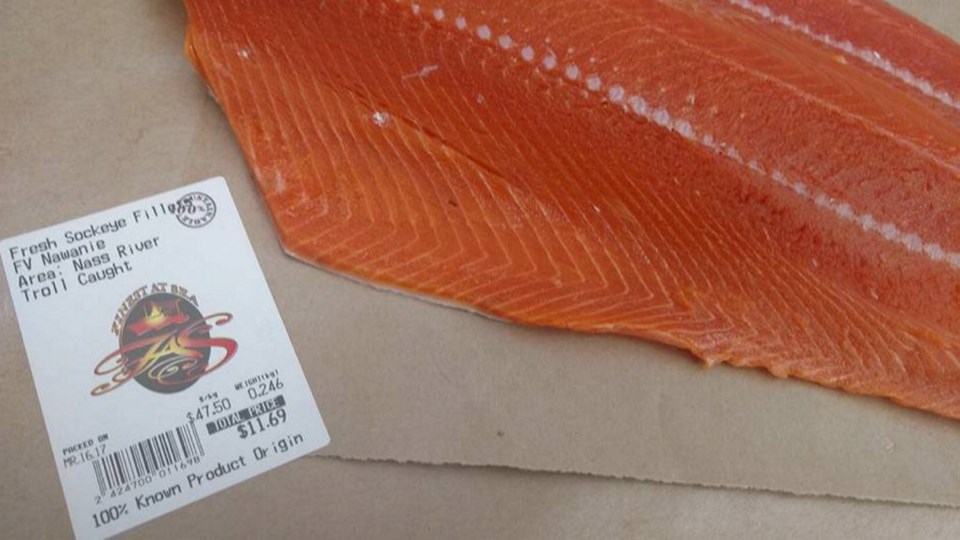Environmental groups are giving Canada’s seafood labelling requirements an F grade due to their lack of details compared with American and European standards that specify place of origin and other factors.
The report card released Thursday said Canada has the vaguest labelling on fish products among the three jurisdictions, increasing the risk of misrepresentation of what’s being sold.
Basics such as the species’ scientific names, along with how and where the fish was caught and processed, should be on the labels, said Colleen Turlo, a spokeswoman for Halifax-based Ecology Action Centre and co-author of the study.
“Inadequate seafood labelling means consumers don’t have adequate health and environmental information about the product,” Turlo said.
In contrast, European Union labels include the common name, the scientific name, the harvest method, the geographic origin of the fish and the country where the fish was last processed. U.S. labels include the common name, the production method and the country where it was processed.
“It’s shocking that our products from Canada are being sold with more detail in the United States and the European Union than they are in Canada,” Turlo said.
Finest At Sea in Victoria is a seafood seller that offers plenty of information about what it sells. Not only does the company state where fish is from, but the label for spring salmon caught off Haida Gwaii specifies that the fish was troll-caught by the Malahat II, said Rose Brewer, a seafood manager. Giving customers that kind of confidence is a major selling point along with sustainable practices, she said.
“I think everyone has the right to know where anything is coming from, especially these days,” Brewer said.
When it comes to salmon, only Atlantic salmon is identified as salmon — and by definition is it farmed, not wild, said Albion Seafoods director of corporate quality Musleh Uddin. Even if the word farmed is not on the label.
Every other kind of salmon is labelled as sockeye, coho or whatever, he said.
Canada allows whole fish caught in other countries to be processed into fillets or other pieces and then labelled “product of Canada” or “made in Canada,” he said. The U.S. requires the product be labelled as, for instance, a product of China processed in the U.S.
“Selling one kind of fish under another name is illegal under Canadian regulations, but there is little provincial/federal oversight,” Uddin said. “We are seeing frequent species adulteration in both retail and food service markets. For example, rockfish fillets are selling as Pacific snapper or expensive snapper/red snapper.”
Labels that provide both the common name and scientific name would help eliminate seafood fraud and species adulteration, he said, even if most people would not recognize a scientific name. Pacific halibut, for example, is Hippoglossus stenolepis
The report on Canadian standards by SeaChoice, a coalition of environmental groups , says some seafood sellers and retailers are voluntarily labelling seafood more comprehensively, but the lack of uniform regulatory requirements means that only some consumers have the information they need. Albion entered into a formal partnership in 2009 with SeaChoice.
Canada should at least match U.S. and European standards to ensure as seafood makes it way through the supply chain that identifying information about the product is not changed, Turlo said. In Canada, it’s possible that consumers won’t have any idea, based on the label, what country the fish comes from and whether it was farmed or wild, she said.
The Canadian Food Inspection Agency, which has authority over food labelling, told the Times Colonist in a statement that it reviewed the SeaChoice International report, including its concerns and recommendations, soon after it was published and the agency’s Food Labelling Modernization proposals are consistent in many ways with their recommendations.
The labelling initiative “aims to develop a more modern food labelling system that responds to current and future challenges, including fish and seafood products processed in federal establishments or imported into Canada,” CFIA said.



